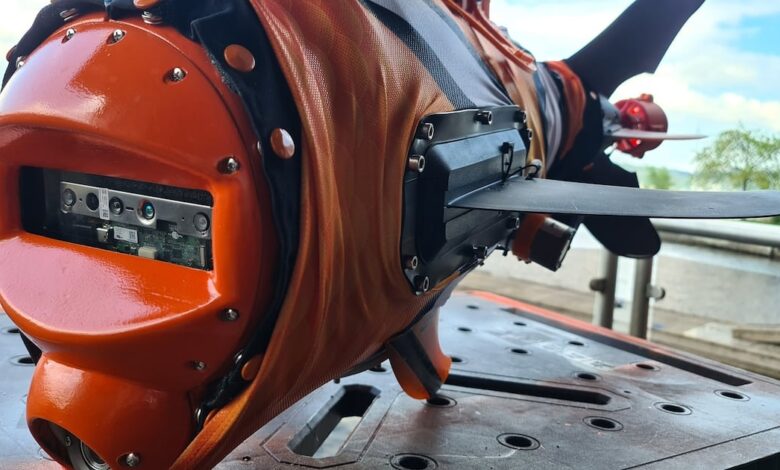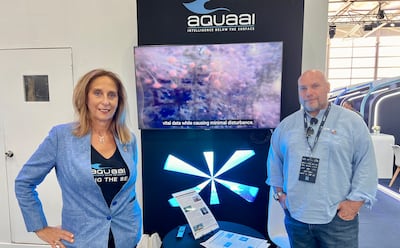What’s in your seawater? Aquaai’s robotic fish have the answers

With an invention that looks like it came straight out of a Hollywood film, a start-up based in California is aiming to help protect the Middle East’s seas.
Aquaai’s robots look like fish and swim like fish, but they also carry a payload of cameras and sensors that the company says could hold the key to providing better data on the health of oceans, rivers and streams.
The company says the same technology, in turn, could help propel the growth of businesses and the economy.
Aquaai has opened a branch in the UAE through the assistance of Hub71, Abu Dhabi’s technology ecosystem.
Liane Thompson, chief executive and co-founder of Aquaai, puts her own unique spin on the model on which the company operates.
“We’re an SaaS model,” Ms Thompson said, referring to software as a service, the licensing model used by various technology companies .
“We call it FaaS, fish as a service,” she added.
Aquaai leases its proprietary fish robot and software data platform to clients, who include research institutions and fish and aquaculture farms.
“[Other fish and ocean life] embrace it, thinking it’s one of them, so they’re not afraid,” said Ms Thompson.
The company was founded in the US in 2014, and later opened a subsidiary in Norway in 2019.
The 3D-printed clownfish-like robots are able to transmit video footage, as well as data that can help track salinity, dissolved oxygen, temperatures and other measurements considered important to researchers and clients in the blue economy industries.
They can easily access the collected information from a digital dashboard.
“It can stay in the water for about a year because it does inductive charging,” said co-founder Simeon Pieterkosky, who explained the specifics of Aquaai’s technology at the DriftX transportation exhibition in Abu Dhabi.
“It doesn’t have a propeller, so it can swim almost anywhere, and it can also avoid coral,” he said, comparing it with other underwater devices used to monitor and collect data, such as torpedo drones.
Mr Pieterkosky said that the ability of Aquaai to provide reactionary data in real time, sets it apart from other methods of data collection that might involve humans, boats and probes.
“It’s all about saving time and getting the data right away as opposed to trying to monitor something after the event,” he said, referring to both natural and man-made disasters that can require the immediate monitoring of oceans, lakes and rivers.
Since its founding in 2014, both Ms Thompson and Mr Pieterkosky say that Aquaai has relied mostly on venture capital firms such as Adam Draper’s Boost VC and Arlan Hamilton’s Backstage Capital in California, as well as a couple of angel and family investors.
Aquaai also received various research grants in Norway.
“The primary investors that come in know that it’s not a simple task that we’re solving [water health], it’s a hard task that we’re trying to solve and it’s global,” Mr Pieterkosky said.
“The majority of people who invest in us are really adventurous, it’s not your typical VC, it’s people who know this is something we need,” Ms Thompson added.
With Aquaai now present in the UAE, the company is looking to partner with businesses to manufacture the robotic fish and scale up across the Middle East.
“We have the government support here thanks to Hub71 and Abu Dhabi Global Market, but we’re also looking for the right business partner to help us scale in the region,” Ms Thompson said, also noting that there was “no shortage of customer demand”, but that increased investment in the company would help it reach a wider audience.

The UAE’s recent hosting of the Cop28 climate conference, along with other environmental endeavours, also piqued Aquaai’s interest.
“It has a dedication to autonomous and integrated systems like ours,” Ms Thompson said.
“It also has a water security strategy for 2036,” she added, referring to the UAE’s plan to ensure water security.
Updated: April 27, 2024, 7:23 AM



